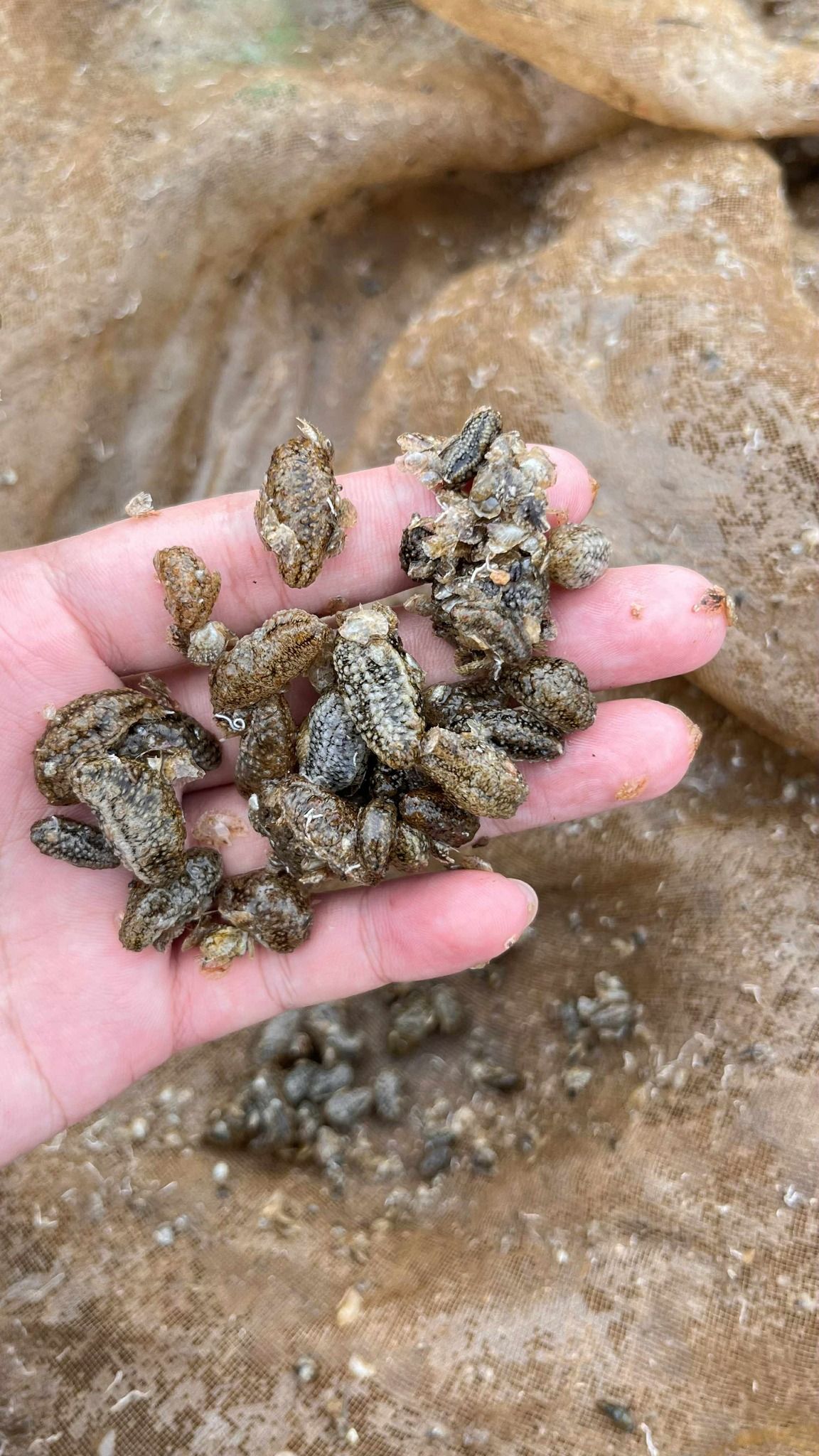On the morning of October 27, the Bureau of Fisheries and Aquatic Resources (BFAR) Regional Office 8 alongside its partners released some 3,000 hatchery-bred sea cucumber juveniles into the coastal waters of Liloan, Southern Leyte.
These juveniles produced at the BFAR Guiuan Marine Fisheries Development Center (GMFDC) in Eastern Samar and placed into four 1x1 meter nursery cages in the Tagbak Marine Park, Tabugon village in Liloan, are set to be monitored monthly, with an expected marketable size of about 100 grams by October 2026 according to BFAR Southern Leyte provincial fisheries officer Rowvic Docena.
The venture is in partnership with Southern Leyte State University – Bontoc Campus (SLSU), the Department of Science and Technology (DOST) Regional Office and the local government unit of Liloan. Docena frames the activity as proof of BFAR-8’s “commitment to advancing science-based and sustainable fisheries management”.
Indeed, by establishing the project dubbed “Enhancing Community-Based Sea Cucumber Ranching for Sustainable Development”, the group hopes to restore declining sea cucumber populations, ease fishing pressure on wild stocks and provide alternative livelihoods for coastal communities.
On paper the logic is sound. For years the Philippines has been identified as a hotspot of sea-cucumber fisheries, with intense export demand for dried sea cucumbers (also known as bêche-de-mer) to Asian markets.
Exports have been characterized by heavy exploitation, weak regulation and dwindling stocks. In that context, a hatchery-and-ranching approach could appear to be a lifeline.
But the reality is more nuanced and perhaps less optimistic if used as proof of sustainability for short-term political PR.
First: even though BFAR introduced Administrative Circular No. 248 in 2013 to regulate size at collection for sea cucumbers, the actual enforcement remains weak and comprehensive national legislation specific to sea cucumber management is still lacking.
Second: sea cucumbers are slow-growing, sensitive to habitat change and vulnerable to overharvesting just like any marine life.
The scientific literature warns that poorly-designed ranching efforts can give communities a false sense of security while wild stocks collapse.
In Liloan’s case, the environmental conditions may be favorable with good water quality, seagrass beds and more importantly, strong community participation.
But the scale is small: 3,000 juveniles in four meter-sized cages is hardly a system-altering intervention. Unless the model is quickly replicated, monitored rigorously and coupled with stronger wild-stock management, the initiative risks becoming symbolic rather than systemic.
If this pilot is to become the model BFAR hopes it will be, there must be regular public reporting of growth and survival rates, community benefit sharing, and linkage to viable value-chains.
In the market, the price for dried sea cucumber currently ranges from PHP 300 to PHP 1,200 per kilogram.
A lucrative margin that too often fuels unsustainable harvesting. The initiative may open doors for livelihood, but only if it avoids becoming a lure for more exploitation masked as “restoration”.
Ultimately, Liloan’s sea cucumber release might well be a step in the right direction but it is, for now, a tentative one.
Sustainability will require far more than net-cages and press-releases; it will demand governance, science and community empowerment aligned over the long haul.
#WeTakeAStand #OpinYon #OpinYonNews #BFAR #DOST
